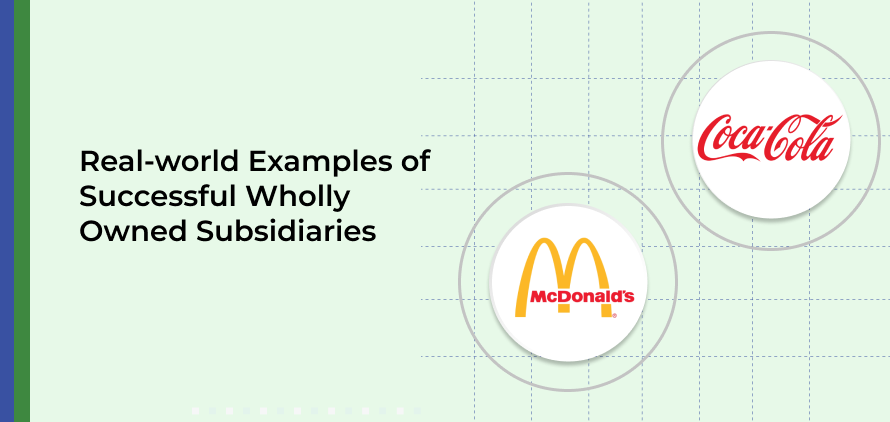Expanding into international markets can be a daunting task for any business. However, one strategic approach that has gained popularity over the years is the establishment of wholly-owned subsidiaries.
Wholly owned subsidiaries are business entities entirely owned and controlled by a parent company, allowing the parent company to have a strong presence and control in foreign markets.
In this article, we will delve into the concept of wholly owned subsidiaries and explore how they can effectively open doors to international markets.
Introduction
As businesses seek growth beyond their domestic borders, they often encounter barriers such as cultural differences, regulatory complexities, and market competition. Wholly owned subsidiaries have emerged as a strategic solution to navigate these challenges while maintaining significant control over their operations in foreign countries.
Understanding Wholly Owned Subsidiaries
A wholly-owned subsidiary is a legal entity established in a foreign country by a parent company. The parent company maintains full ownership of the subsidiary, allowing it to dictate business strategies, make critical decisions, and transfer knowledge seamlessly across borders.
Advantages of Wholly Owned Subsidiaries
Full Control and Decision-Making Power
Unlike other market entry strategies like joint ventures or partnerships, wholly-owned subsidiaries give the parent company complete control over operations. This control enables quicker decision-making, ensuring that business strategies can be adapted promptly to changing market conditions.
Protection of Intellectual Property
In international markets, protecting intellectual property can be challenging. Wholly owned subsidiaries offer a secure environment for safeguarding patents, trademarks, and proprietary technologies, preventing unauthorised use or duplication.
Consistency in Branding and Operations
Maintaining consistent branding and operations is crucial for establishing a solid market presence. The parent company can ensure its brand identity and operational standards are upheld without compromise with a wholly-owned subsidiary.
Mitigating Risks and Challenges

However, entering international markets through wholly-owned subsidiaries also presents several challenges that must be addressed.
Financial Investment and Resource Allocation
Establishing and maintaining a wholly-owned subsidiary requires significant financial investment. Companies must allocate resources for infrastructure setup, marketing, and hiring local talent.
Cultural and Regulatory Differences
Operating in a foreign country entails adapting to local regulations and cultural nuances. Wholly owned subsidiaries must navigate these differences while aligning with the parent company’s values and practices.
Competition and Market Adaptation
Wholly-owned subsidiaries face competition from local and international players. Adapting to market demands and preferences is essential to remain relevant and competitive in the target market.
Step-by-Step Establishment of Wholly Owned Subsidiaries
To successfully establish a wholly-owned subsidiary, companies should follow a structured approach:
Market Research and Selection
Thorough market research is essential to identify potential markets that align with the company’s products or services. Market size, consumer behaviour, and competition should be considered.
Legal and Regulatory Procedures
Navigating legal and regulatory requirements is crucial. This includes company registration, licenses, permits, and compliance with local laws.
Resource Allocation and Infrastructure Setup
Allocating resources for infrastructure development, distribution networks, and marketing initiatives is vital for a subsidiary’s success.
Staffing and Training
Hiring and training local talent ensures the subsidiary has the necessary skills to operate effectively within the local context.
Real-world Examples of Successful Wholly Owned Subsidiaries

McDonald’s Corporation
McDonald’s is a prime example of a company successfully expanding using wholly owned subsidiaries. Each subsidiary operates under the global brand while tailoring its menu to local preferences.
The Coca-Cola Company
The Coca-Cola Company has established wholly owned subsidiaries in various countries, allowing it to maintain consistent product quality and brand image worldwide.
Wholly-Owned Subsidiaries vs Joint Ventures
Advantages of Wholly-Owned Subsidiaries
Enhanced Control and Decision-Making
One of the primary advantages of wholly-owned subsidiaries is their level of control. The parent company can implement its business strategies without consensus from external partners.
Clear Business Focus
Wholly-owned subsidiaries often align closely with the parent company’s goals. This clear business focus can lead to streamlined operations and efficient resource allocation.
Consolidated Financials
Consolidating financial statements is more straightforward with wholly-owned subsidiaries, allowing for a comprehensive view of the entire business’s financial health.
Challenges of Wholly-Owned Subsidiaries
Higher Initial Investment
Establishing a wholly-owned subsidiary requires a significant upfront investment. This financial commitment can be daunting, especially for smaller businesses.
Increased Risk Burden
With complete ownership comes increased risk. Any losses incurred by the subsidiary directly impact the parent company’s bottom line.
Benefits of Joint Ventures
Shared Risk and Resources
In a joint venture, risk is distributed among the partners. Additionally, companies can leverage each other’s strengths, resources, and expertise.
Access to Local Expertise
When entering unfamiliar markets, a local partner’s insights and understanding can prove invaluable, facilitating smoother market penetration.
Entry into Restricted Markets
Some markets have strict regulations that make entry difficult for foreign companies. Joint ventures with local partners can ease market access.
Drawbacks of Joint Ventures
Limited Control
Joint ventures require shared decision-making, sometimes leading to conflicts or delays in strategic choices.
Decision-Making Complexities
Agreeing on key decisions with partners with different priorities and approaches can lead to complexities in execution.
Factors Influencing the Choice
Several factors play a role in determining whether to opt for a wholly-owned subsidiary or a joint venture.
Strategic Objectives
The company’s long-term goals and objectives should align with the chosen expansion strategy.
Resource Availability
The availability of financial and human resources can impact the feasibility of either option.
Risk Tolerance
The company’s willingness to bear risks and the potential consequences of those risks influence the decision.
Striking the Balance: Hybrid Models
In some cases, companies choose to adopt hybrid models that combine aspects of both wholly-owned subsidiaries and joint ventures.
The Future of Wholly Owned Subsidiaries in a Globalised Economy
As the world becomes more interconnected, wholly-owned subsidiaries will likely play a significant role in international business expansion. Their ability to provide control and consistency remains attractive to companies aiming to establish a global presence.
If you wish to check out how companies can set up a wholly-owned subsidiary in India, Click here.
Conclusion
Wholly owned subsidiaries serve as a strategic gateway for businesses aspiring to venture into international markets. While challenges exist, the advantages of control, brand consistency, and intellectual property protection make them a compelling choice for companies seeking global expansion.
FAQs
Are wholly-owned subsidiaries the only way to enter international markets?
No, there are other strategies like joint ventures and licensing agreements. Wholly owned subsidiaries offer more control but require substantial investment.
What industries commonly use wholly-owned subsidiaries?
Industries like fast food, consumer goods, and technology often use wholly-owned subsidiaries for global expansion.
How can cultural differences affect wholly owned subsidiaries?
Cultural differences can impact marketing strategies, product localisation, and employee interactions.
Are wholly-owned subsidiaries immune to market risks?
No, wholly-owned subsidiaries are still exposed to market competition, regulatory changes, and economic fluctuations.
Can a company switch from a joint venture to a wholly owned subsidiary?
Yes, companies can transition from joint ventures to wholly owned subsidiaries if they seek more control over their operations.
